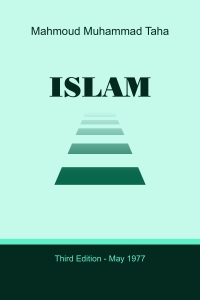Islam as Two Messages
Islam, being a middle ground between two extremes and encompassing the characteristics of both, inherently consists of two aspects: one closer to the beginning and another closer to the end. This duality becomes evident when examining the verse mentioned earlier and its counterparts in the Qur’an.
This phenomenon holds profound implications: Islam, as presented in the Qur’an, is not a single message but two messages. The first message aligns with the beginning, closer to the characteristics of Judaism. The second message aligns with the end, closer to the characteristics of Christianity.
The Prophet Muhammad conveyed both messages through the Qur’an and his way of life among the people. However, he elaborated on the first message in his legislation, while the second message was left largely summarized - except where the legislation overlaps, particularly in acts of worship, which serves both messages.
The first message begins and ends with the declaration: “There is no god but Allah, and Muhammad is the Messenger of Allah.” It is akin to a still photograph, capturing a fixed and stable state with minimal evolution.
The second message begins with: “There is no god but Allah, and Muhammad is the Messenger of Allah.” But it ends with the abstract declaration: “There is no god but Allah.” This progression reflects a continuous evolution, akin to a moving film, transitioning from beginning to end.
The abstraction of the testimony ("There is no god but Allah") signifies a deeper understanding of God’s position in relation to Muhammad’s. It represents the completion of monotheism (tawheed). God says to His Prophet: (And We revealed to you the message that you may make clear to the people what was sent down to them and that they might give thought.) (16:44)
A careful examination of this verse reveals how Islam comprises two messages: the beginning of the verse, “And We revealed to you the message,” refers to both messages - the first and the second. The middle of the verse, “that you may make clear to the people what was sent down to them,” highlights the elaboration of the first message, which, as mentioned, is closer to the beginning. The end of the verse, “that they might give thought,” points to the aspiration of rising from the first message to the level of the second message. This elevation is achieved through perfecting the worship practices ordained by God for the Muslims - or, more precisely, for the believers (mu’minin).

